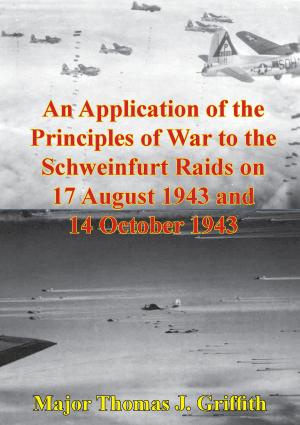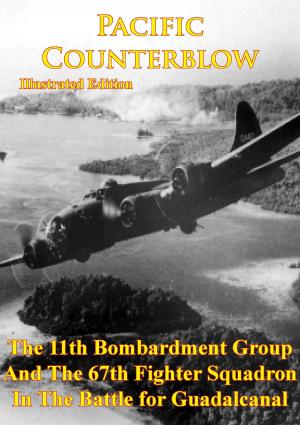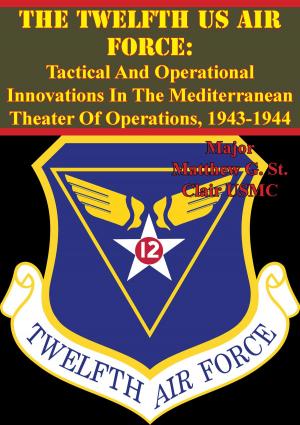The Cinderella Front: Allied Special Air Operations In Yugoslavia During World War II
Nonfiction, History, Germany, European General, Military, United States| Author: | Major Paul J. Freeman | ISBN: | 9781782897965 |
| Publisher: | Lucknow Books | Publication: | August 15, 2014 |
| Imprint: | Lucknow Books | Language: | English |
| Author: | Major Paul J. Freeman |
| ISBN: | 9781782897965 |
| Publisher: | Lucknow Books |
| Publication: | August 15, 2014 |
| Imprint: | Lucknow Books |
| Language: | English |
This research paper examines how special operations were conducted in Yugoslavia during WWII; how did the operational art conducted fit into Allied grand strategy; and how effective were these operations? These operations were conducted using multinational, coalition forces, and for this reason the lessons from this examination are relevant to warriors today.
Conducting military operations almost always involve a scarcity of forces. This scarcity forces difficult decisions in development of strategic goals and conduct of operations. This difficulty is further compounded when coalition forces involve multiple nations, each with their own priorities. This is the situation that existed in WWII. The US wanted a concentrated invasion of NW Europe, while Britain and Russia were interested in a multi-front battle of attrition against the Axis, featuring a Balkan invasion. There were inadequate forces to commit to an invasion of the Balkans, but there was an opportunity to divert Axis strength from other fronts. This paper will look at Allied operations in Yugoslavia (typical Balkan operations) and analyze: 1.) the unique contextual factors influencing special operations in the Balkans during WWII, 2.) operational art factors of this unconventional employment of airpower in the politically divided region, and 3.) the success and/or failure of military planners and commanders in deriving military from strategic objectives and in attaining these objectives.
The analysis and conclusions will examine the logic and congruence of these operations to the respective strategy and will highlight contextual influences (aircraft and equipment capabilities, weather, logistics) on the success of these operations to meet the strategic objective.
This research paper examines how special operations were conducted in Yugoslavia during WWII; how did the operational art conducted fit into Allied grand strategy; and how effective were these operations? These operations were conducted using multinational, coalition forces, and for this reason the lessons from this examination are relevant to warriors today.
Conducting military operations almost always involve a scarcity of forces. This scarcity forces difficult decisions in development of strategic goals and conduct of operations. This difficulty is further compounded when coalition forces involve multiple nations, each with their own priorities. This is the situation that existed in WWII. The US wanted a concentrated invasion of NW Europe, while Britain and Russia were interested in a multi-front battle of attrition against the Axis, featuring a Balkan invasion. There were inadequate forces to commit to an invasion of the Balkans, but there was an opportunity to divert Axis strength from other fronts. This paper will look at Allied operations in Yugoslavia (typical Balkan operations) and analyze: 1.) the unique contextual factors influencing special operations in the Balkans during WWII, 2.) operational art factors of this unconventional employment of airpower in the politically divided region, and 3.) the success and/or failure of military planners and commanders in deriving military from strategic objectives and in attaining these objectives.
The analysis and conclusions will examine the logic and congruence of these operations to the respective strategy and will highlight contextual influences (aircraft and equipment capabilities, weather, logistics) on the success of these operations to meet the strategic objective.


![Cover of the book Eye Witness’s Narrative Of The War From The Marne To Neuve Chapelle 1 September, 1914-March 1915 [Illustrated Edition] by Major Paul J. Freeman](https://www.kuoky.com/images/2015/november/300x300/9781786255594-V3rY_300x.jpg)

![Cover of the book The First World War, 1914-1918; Personal Experiences Of Lieut.-Col. C. À Court Repington Vol. I [Illustrated Edition] by Major Paul J. Freeman](https://www.kuoky.com/images/2015/november/300x300/9781786250933-rzxF_300x.jpg)
![Cover of the book With The Battle Cruisers [Illustrated Edition] by Major Paul J. Freeman](https://www.kuoky.com/images/2015/november/300x300/9781786255648-yDEP_300x.jpg)






![Cover of the book The AAF In Northwest Africa [Illustrated Edition] by Major Paul J. Freeman](https://www.kuoky.com/images/2014/august/300x300/9781782894667-I1uq_300x.jpg)


